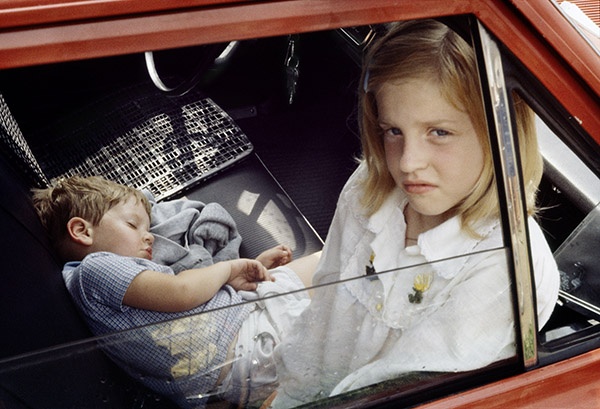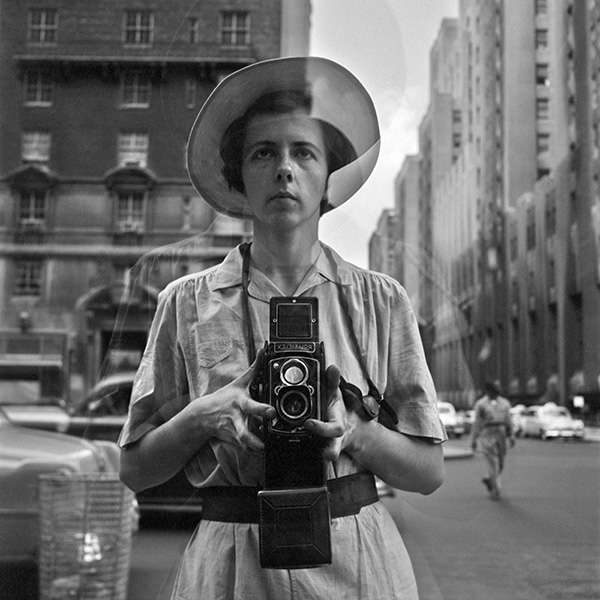NEW VIVIEN MAIER EXHIBITION OPENS IN HELSINKI
From London, to Paris, to Helsinki, an unusual revival is transforming contemporary photography and attracting the attention of thousands of photographers, historians, and enthusiasts alike. Vivian Maier (1926 – 2009), an American documentary photographer who vehemently concealed the photographs she produced on the streets of Chicago and New York during the mid to late twentieth century, possessed a visionary talent for photography which remained unacknowledged until after her death. Working as a nanny and caregiver for more than forty years and confining her creative output to the private quarters of her employers’ homes, Vivian never sought to display her images. Now, from the Finnish Museum of Photography, comes a major retrospective focusing on her street photography. Bringing together Vivian’s most beloved photographs from four different decades, the exhibition illuminates the archive of a photographer who captured the detail of urban America with a clarity and humanity which few others have achieved, and which continues to resonate with audiences nearly fifteen years since her work was first discovered.
The exhibition is the second public showcase of Vivian’s work from the Finnish Museum of Photography. The first, The Self-portrait and its Double, which focused on Vivian’s self-portraits, was the most popular in the museum’s history; before the COVID-19 pandemic forced it to close prematurely, the collection was visited by more than 26,000 people. This new exhibition responds to continuous demand for her work; assembled by renowned curator Anne Morin – who has worked with Vivian’s photographs since 2010 – and produced by diChroma Photography, the heterogenous assortment of black-and-white and colour photographs is underpinned by a sense of indomitable vitality.
In one photograph (Vivian Maier, New York, 1954), Vivian captures her own image in a nearby window, her signature Rolleiflex held inconspicuously at chest level. The composition, wherein the window twice duplicates her frame by superimposing a phantasmic, magnified outline of her body over her more corporeal reflection, feels strangely prescient; symbolic of her inconstant character and ability to blend in, it is also an evocation of the reputation which would survive her. Perfectly centred, and framed by the towering buildings behind her, her equanimity within the busy cityscape is immediately apparent; her clothes – a broad-brimmed hat and utilitarian dress belted at the waist – are those of an explorer. The lucid form of the image imparts the confidence of the photographer, who was as fiercely independent in life as she was in her work, and the penetrative insight with which she interpreted her environment.
Although she evidently appreciated her milieu, her presence within it feels potentially incongruent. Charlie Siskel, co-director of a documentary which pieces together her life – Finding Vivian Maier (2013) – believes her career as a nanny sharpened her capacity for observation – a position which precipitates distance. In some respects, Vivian was a quintessential eyewitness; a nomadic person who was unafraid to look her surroundings squarely in the eye, her photographs make a theatre of the city. There is a vibrant sense of activity in Vivian’s photographs; surveying them, it is easy to hear the raucous traffic, to feel the spray of water as it bursts from a fire hydrant. Beneath her lens, apparently mundane bustle became high drama. Through Anne’s remarkable exhibition, Vivian’s indispensable body of work can be experienced once again.
Vivian Maier
15th February to 18th April 2021
K1 Kämp Galleria, Mikonkatu 1, 00100 Helsinki
all images © Estate of Vivian Maier, Courtesy of Maloof Collection and Howard Greenberg Gallery, NY.














